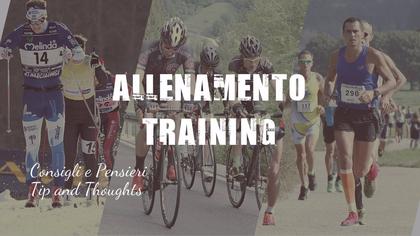Official Sponsors


26.01.2025

| News date | 29.11.2016 |
Welcome back to our weekly date with “Tips and Thoughts”. Today the technician of the Fiamme Gialle Ski Team, Andrea Zattoni, explains the secrets for the preparation to a long distance race.

Marcialonga organises three races in three different disciplines, where all competitors have a common passion and a sporting spirit, but also the athletic preparation is very similar because we are speaking about “long distance races.”
We have already talked about the types of activities governing the training sessions in the different seasons and for the skiing we know that we should choose in summer and autumn general and special sports, while in winter, where conditions allow, the activity will be specific (How to plan the best training for Cross Country Skiing). But the chosen of activities is not all, it is equally fundamental a good planning of the workout.
The combination of exercises during a workout session (the workload) causes changes to our body. Each person has a different reaction to the same stimulus. Take as example two persons, A and B, who are running at the same speed of 12km/h for 1 hour: the runner A is really fatigue, while the runner B is not so tired. The same stimulus causes two different reactions that will affect their behaviour in front of the future training plan. They will have different workloads, according to the objectives and their abilities.
The workloads can be divided into five categories: training, maintenance, recovering, inappropriate, excessive (Viru,1995).
The secret for preparing for a long distance race is to be based the training on fundamental principles, or better, on behavioural logics:
Planning the training for a long distance run, we should start each type of activity with a low intensity, increasing progressively the quantity and the quality.
For example, starting in spring with short runs (30’-40’), we will constantly increase the duration and then the intensity. The same is for the exercises of general muscular endurance: we should start with easy exercises, increasing with time the maximal and power strength. Exercises should involve all the body muscles (functional training).
When the athletic preparation is already well underway, we should not forget to include sometimes in the workout schedule a long training (running, walking or skiing, when possible). This kind of training permits to adapt the body and also the mind for a long distance race. The mental aspect is the first cause to give up, before the fatigue and the muscle pain. We will talk the next week about motivation and mental training.
The body and the mind have to get used to this kind of race and a good planning of the training creates the better conditions to permit this and to permit the body to use during the long distance competition the energetic reserves that usually during the normal training does not use.
But be aware, during the three weeks before the race it is not recommended a hard training that will notch these energetic reserves.
1 Volume (quantity): the amount of training in hours, kilometres covered, weights lifted, series and repetitions.
2 Intensity (quality): different levels of energetic and mental effort, compared to the max performance possible. Usually, in the endurance sports the intensity is controlled through the heart rate compared to the maximum value or the anaerobic limit. The ratio between volume and intensity is usually inversely proportional.
READ ALSO
MARCIALONGA SKIING: HOW TO PLAN THE BEST TRAINING
XC SKIS WITH SKINS: DO THEY REALLY ALLOW GOOD PERFORMANCES?
THE IMPORTANCE OF THE MUSCULAR STRENGHT FOR THE XC SKIING AND FOR THE WELLNESS
THE SUPPLEMENT DURING THE TRAINING OR THE RACE
WHAT SHOULD CONTAIN A WAX BOX?
PILATES, AN EXCELLENT TRAINING FOR XC SKIING
THE MOTIVATION IN THE ENDURANCE SPORTS
ANTONELLA CONFORTOLA: EXPERIENCE AND ADVICE ON MARCIALONGA
Main Sponsors




Official Sponsors


Sustainable Partner

Official Suppliers





















Official TV Broadcaster

Institutional Partners






Friends


Under the patronage of
